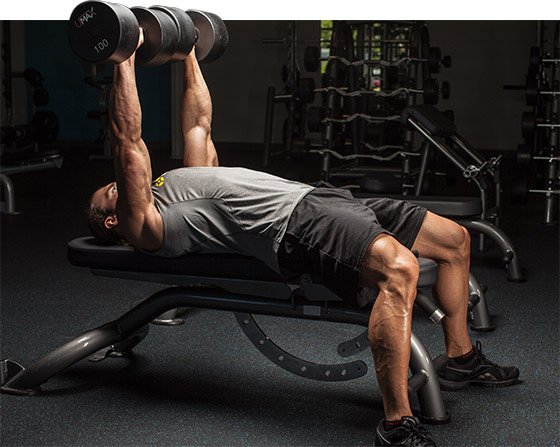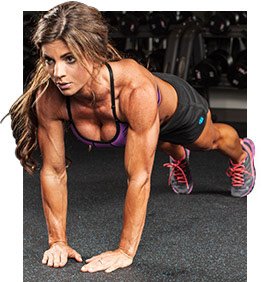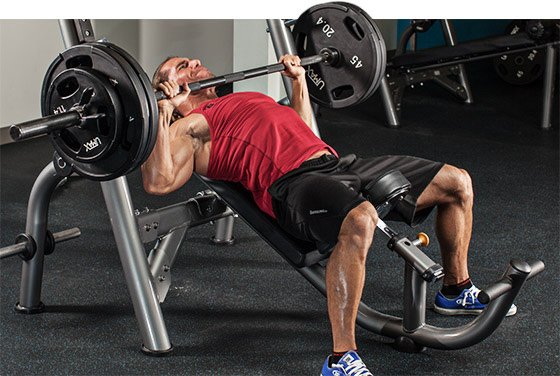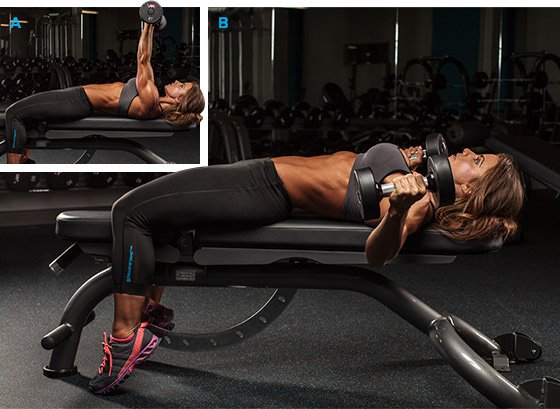Among lifters, there aren't many people who will shy away from wanting to build a strong, chiseled chest. After all, they know beastly chest muscles scream strength and power, and look great on the beach.
Functionally, strong pecs also assist with performing everyday activities, lower the risk of shoulder injuries, and provide that extra edge in sports and in the gym. Simply put, a well-built chest is, well, pectacular. Sorry.
It's high time for you to get your chest training out of a rut. Use and share these tips to reassess your chest routine and pave your way to pec success.
Stick With Basics
When the chest game starts to falter, some people react by piling on ridiculous-sounding accessory work like a one-handed, reverse lay-up upper-cut. No need to reinvent the wheel here; there are no secret exercises.

Tried-and-true foundational exercises like ye olde bench press, dumbbell press, incline press, and chest flye have helped top lifters such as Steve Reeves, Arnold, and countless other folks throughout the years. So why wouldn't they work for you?
Before trying to change things, make sure you master these movements. Perfect your technique and form and identify the best rep range for your objective. After all, any structurally solid building must rise from a strong foundation.
Exercises like the bench press are the cornerstones for a powerful chest. Still doubtful? Look to IFBB Physique Pro Craig Capurso, who uses these exercises to build his rock-solid chest.
Everyone Should Train Chest
Yep, that includes you, ladies. Unfortunately, some women need to banish these false preconceived notions of how chest exercises could negatively impact their bust. No, they will not shrink your bust. No, they will not make you look like She-Hulk. So stop worrying over these unfounded concerns!

If there's someone who has both a strong and good-looking chest, it's WBFF Pro Jen Jewell. Jen knows the importance of chest day and likes to include as many different movements into her chest workout as possible, including presses, flyes, and push-up variations.
"Just because [women] may not be out to build the biggest pecs out there doesn't mean we should neglect chest training," she says. "Our chests are a major muscle group. We wouldn't neglect training our back, so why would we skip out on chest day?"
It's like those dudes who exclusively train upper body and end up with chopsticks for legs. The same concept of imbalance echoes here: Working out one group of muscles but ignoring another group could make you look (and function) disproportionate.
Jen continues: "If we neglect training our chests, it could lead to a muscular imbalance in our physique and impact our training all around—we can't have that, now can we?! When we are working our chests, our shoulders and triceps are involved, too. And ladies, there's another bonus! Even though you can't increase the size of your breasts themselves with training, you can tighten the muscles of the chest, which makes for an even perkier bust line."
Squeeze
Squeeze what, you ask? Well, there's your problem.
When benching, you want to squeeze two things: the bar handle and your pec muscles. When I say squeeze your pecs, I don't mean using your hands to actually squeeze them. On the concentric, or lifting, portion of your reps, think about contracting your pecs. Squeezing increases the pump and the work involved, as well as the density of the muscle. It won't be easy, but your hard efforts will be rewarded.

Also make sure you squeeze the bar or dumbbell handle as if you want to crush it in the palm of your hands. This clench will invite more fibers to the pump party, resulting in increased strength down the road.
Focus On Form
Proper lifting form trumps everything else. If your form collapses, it doesn't matter that you're slinging twice your body weight.
If the intended muscle fibers aren't recruited correctly, other muscle groups may dominate the exercise, which adds unnecessary stress to muscle groups that aren't designed to bear heavy loads. That's how you get hurt. No one builds a strong chest while sitting in physical therapy or dealing with an injured back or shoulder. Throwing up big bench numbers may impress the bros at your gym, but it's not a good long-term strategy if those numbers come at the expense of good form.
Executing proper form, performing reps at a slower tempo, and focusing on using your chest throughout the movement will maximize the intensity and effectiveness of the workout, while minimizing injury risk.
Push Yourself
Your body is an amazing, intelligent machine that will adapt to stress quickly. If you don't push it hard enough, it won't grow. It's as simple as that.
While proper form still rules the day, muscle growth requires progressively increased stimuli. This increase leads to breaking down the muscle fibers and rebuilding stronger and bigger ones, preparing you for the next time you go against the iron.

Dumbbell Flye
As you grow more comfortable performing the movement perfectly within a certain weight range, push yourself to take on more weight—as long as your form stays tight.
Rest, Pause, Drop
When adding more weight is no longer a challenging option, there's another method for making your next chest workout a sufferfest. I call it the "rest, pause, drop" method—RPD, for short—and no, it isn't a new dance routine.
I combined two intensity-raising techniques: rest-pause and dropsets. The former breaks up one set into several subsets with brief rest worked into the whole set. The latter is a technique that allows you to continue an exercise with a lighter weight after your muscles have tapped out at a heavier weight. My rest, pause, drop methodology applied to a chest workout makes for absolute muscle-building brutality and is designed to train all your muscle fiber varieties at once.
Rest
Start with a weight you can do for 6-8 reps and go to failure (use a spotter). Rest for 5 seconds and then try for a couple of more.
Pause
Reduce the weight by 20-25 percent. Repeat what you just did, including the rest-pause, for 5 seconds.
Drop
Reduce the weight again—by the same amount you did last time—and repeat the rest-pause set one more time.
The final result is a 25-30 rep set. Beginners can do one set of this at the end of their chest workout, but I don't recommend any more than that. Advanced lifters can include this RPD set with each exercise next Monday. (Everyone still does chest on Monday, right?)
Dust Off the Decline
You know that decline bench? The sloped brute that gathered a thick layer of dust from underuse? Well, this underrated angle can be a huge boon to your chest routine. It is approved by strongman Colton Leonard, who knows a thing or two about strong pecs.
Comparing exercises done on a flat bench versus a decline bench, some studies have shown that more muscle fibers in the pec are recruited while on the decline. Try this out with both a barbell and dumbbells.
Put these tips to the test and share your results with me and the rest of us in the comments below!

